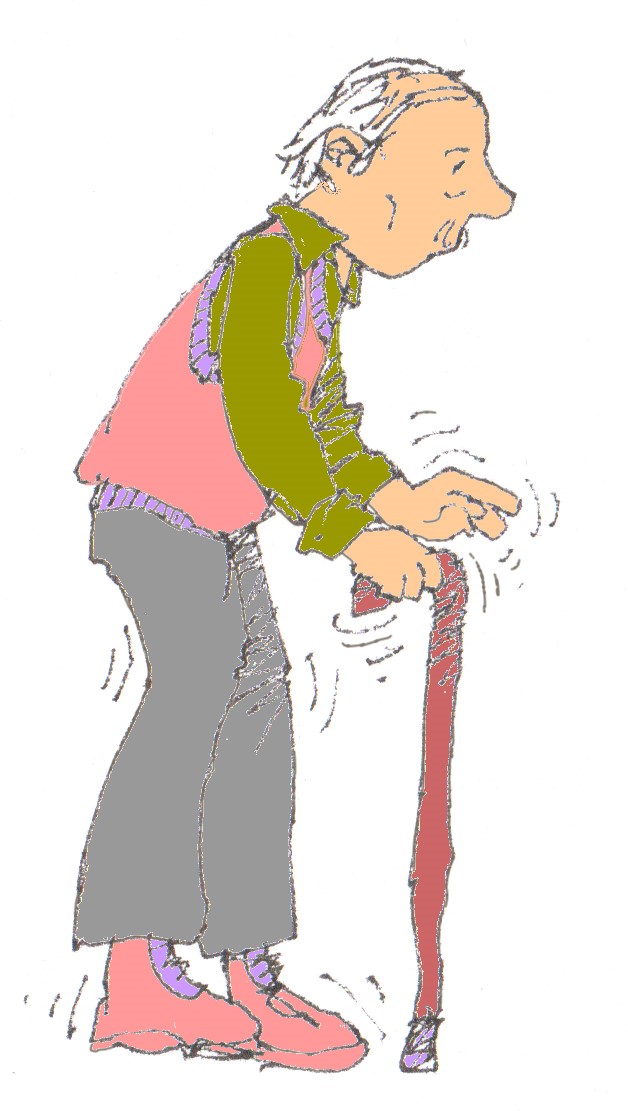PARKINSON’S DISEASE
What is Parkinson’s disease?
Parkinson’s disease (PD) was originally described as “the shaking palsy” by James Parkinson in 1817. The main features are stiffness, a fixed facial expression, difficulty with movements and a characteristic so-called “pill rolling” tremor. Affected individuals have increasing difficulty with motor functions such as walking, writing and some social activities such as holding a tea cup. The condition progresses with age and may in time completely incapacitate the sufferer.
Thought disorder and behavioural problems may occur and dementia is common later in the disease. More than one third of sufferers become depressed.
Causes of PD
PD is age related and is seldom found in those under 60. (A notable exception was the actor Michael J Fox, star of such classics as “Back to the future”, who developed it when he was only 29). About one person in every 500 over the age of 65 gets PD and the prevalence is increasing – probably due to increasing life expectancy. Men are more often affected than women. Sometimes it results from head injury – boxers are more prone to PD, Mohammed Ali being the best known example. In a few people there is a genetic influence.
People with PD have low levels of a chemical called L-dopa in their brains and the most effective treatment is the replacement of this chemical with medication.
Exercise in the prevention of PD
Few people would take up exercise specifically to avoid PD. However evidence has recently emerged that regular physical exercise does reduce the risk. The combined results of a number of studies involving more than 500,000 subjects confirmed the relationship. The study compared habitual exercise level with the risk of developing PD and found that those in the highest exercise category had two thirds the risk of PD compared with those in the lowest category.
Fitness in the prevention of PD
As is found in so many conditions, cardio-respiratory fitness is a better predictor than self-assessed physical activity. 7347 US veterans were exercise tested and followed up for up to 18 years. Men with the highest levels of physical fitness had only one quarter the risk for developing PD compared to those in the lowest fitness group. More physically active PD patients also have a slower rate of progression.
Exercise to treat PD
There is a wide variability in the effect of exercise treatment on the symptoms of PD. Exercise can be very helpful to some, but by no means all.
Intensive exercise programmes can improve mobility and reduce disability in PD patients. A 2010 meta-analysis found that exercise, mainly physiotherapy, improves physical functioning and quality of life, leg strength, balance and walking in Parkinson’s disease patients. A more recent review of treadmill training in patients with PD found that this intervention does improve stride length and gait speed but curiously does not improve walking distance. Higher intensity exercise seems to be more effective than less vigorous regimes
It is not easy for PD patients to take up exercise and a fun element to exercise training is important. Examples of PD treatment programmes which are both fun and beneficial have included non-contact boxing training and ping-pong.
PS
An unusual form of Parkinson’s Disease
In the 1920s there was a pandemic of a viral infection called encephalitis lethargica. While most sufferers recovered, many were left with a condition very similar to Parkinson’s disease. Some were so profoundly affected that they became totally immobilised. In the late 1960s the well known neurologist, Dr Oliver Sacks, treated a number of these severely affected patients with a new medication – L-dopa – with dramatic responses in many. He chronicled the results of this treatment in his book “Awakenings”. The book inspired the 1982 play “A kid of Alaska” by Harold Pinter and was subsequently made into a film starring Robert de Niro and Robin Williams.
This has nothing to’ do with exercise but I thought that you might find it interesting.
Subscribe to the blog
Categories
- Accelerometer
- Alzheimer's disease
- Blood pressure
- BMI
- Cancer
- Complications
- Coronary disease
- Cycling
- Dementia
- Diabetes
- Events
- Evidence
- Exercise promotion
- Frailty
- Healthspan
- Hearty News
- Hypertension
- Ill effects
- Infections
- Lifespan
- Lipids
- Lung disease
- Mental health
- Mental health
- Muscles
- Obesity
- Osteoporosis
- Oxygen uptake
- Parkinson's Disease
- Physical activity
- Physical fitness
- Pregnancy
- Running
- Sedentary behaviour
- Strength training
- Stroke
- Uncategorized
- Walking


